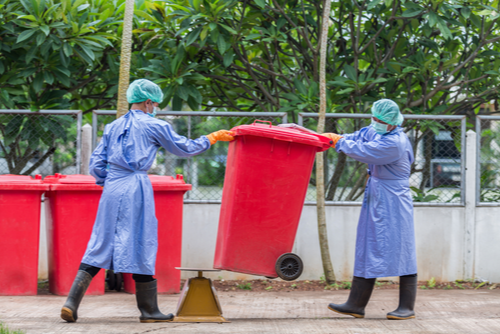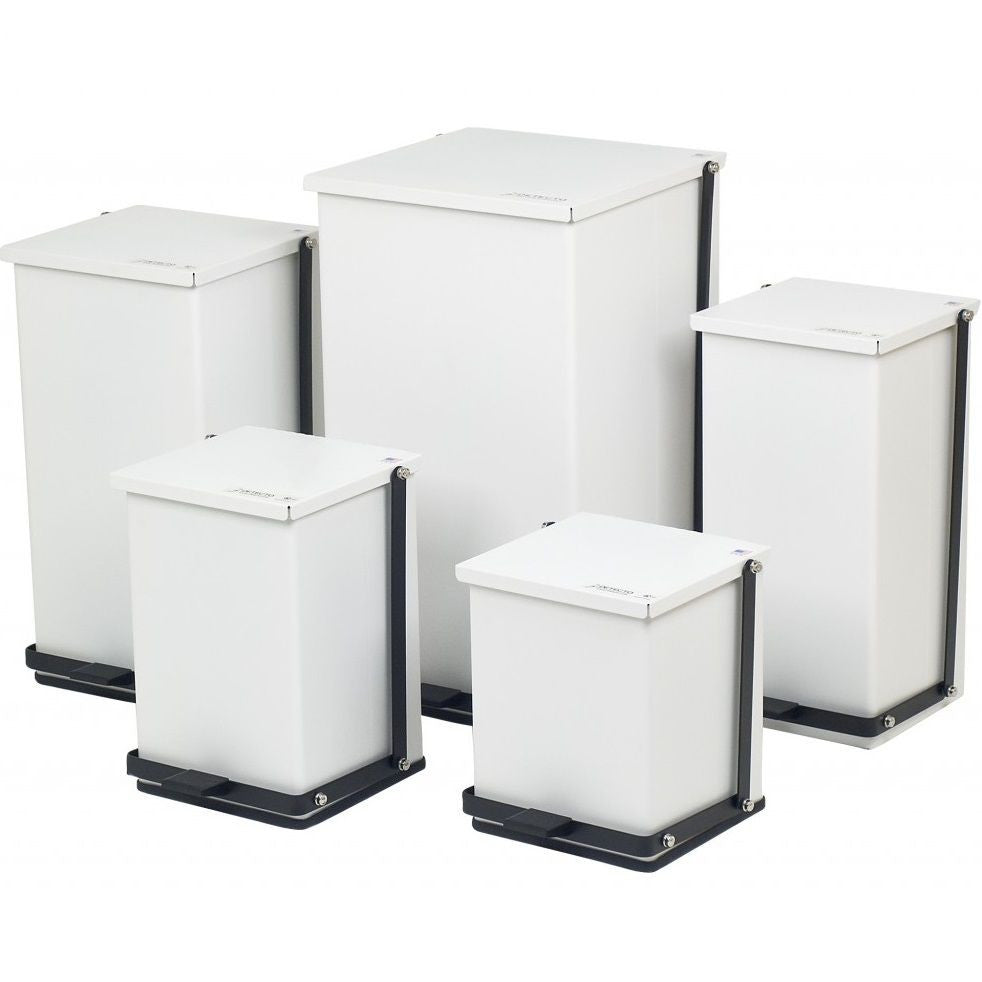Guardians of Cleanliness: Local Medical Waste Removal Service for Your Assurance
Guardians of Cleanliness: Local Medical Waste Removal Service for Your Assurance
Blog Article
The Value of Proper Clinical Garbage Disposal: An Overview for Medical Care Facilities
Correct medical waste disposal is an important facet of health care center management, guaranteeing the safety and well-being of people, staff, and the environment. From comprehending the various groups of clinical waste to conforming with governing demands, medical care centers need to embrace effective waste partition practices and pick proper disposal techniques.
Understanding Medical Waste Categories
Recognizing clinical waste classifications is critical for proper disposal in medical care centers. Clinical waste is a broad term that incorporates various kinds of waste generated in medical care setups, such as clinics, research laboratories, and medical facilities. Classifying clinical waste helps make sure that it is dealt with, saved, and disposed of securely and based on appropriate policies.
There are a number of classifications of medical waste that healthcare centers require to be aware of. These groups include infectious waste, sharps waste, pharmaceutical waste, chemical waste, and contaminated waste (medical waste disposal services with WasteX). Each category has specific features and calls for various disposal methods to decrease the threat of injury to healthcare workers, individuals, and the atmosphere
Transmittable waste, as an example, describes throw away contaminated with possibly infectious products, such as blood, body liquids, and cells. Sharps waste consists of needles, syringes, and various other sharp items that can create injury or transmit infections. Pharmaceutical waste consists of ended or extra medications, while chemical waste includes harmful chemicals used in medical treatments. Radioactive waste consists of products contaminated with contaminated compounds, such as nuclear medication materials.
Conformity With Regulatory Requirements
Healthcare centers have to make sure conformity with governing needs for correct medical garbage disposal. Regulative bodies, such as the Epa (EPA) and the Occupational Security and Health And Wellness Management (OSHA), have established standards and regulations to guard public health and wellness and the setting. These policies lay out the proper handling, storage, transportation, and disposal of clinical waste.
Compliance with regulative needs is important for healthcare centers to stay clear of lawful fines, reputational damages, and possible injury to human health and the atmosphere. Failing to abide with these policies can lead to penalties, lawsuits, and even the suspension or cancellation of operating licenses.
To guarantee compliance, medical care facilities should establish extensive waste management programs that include team training, proper waste segregation, and making use of suitable containers and labels. Regular audits and evaluations must additionally be performed to identify any kind of non-compliance problems and address them quickly.
It is necessary for healthcare centers to stay up to date with adjustments in policies and update their waste management practices accordingly. This can be attained by actively keeping track of updates from governing bodies and taking part in training programs and workshops.
Executing Efficient Waste Partition Practices
To guarantee correct clinical garbage disposal, health care centers must implement effective waste partition practices. Waste partition is an essential action in the total waste administration procedure, as it aids reduce the threat of infection, protects against cross-contamination, and guarantees the safe disposal of different types of waste. Reliable waste segregation practices entail dividing medical waste into different categories based upon its attributes and prospective hazards.
One common method is the segregation of sharps waste, such as needles and scalpels, from various other sorts of clinical waste. Sharps waste need to be put in puncture-resistant containers to stop injuries and potential infections. Additionally, harmful waste, such as chemicals and drugs, ought to be separated from basic medical waste to stop environmental contamination.
Appropriate labeling and color-coding of waste containers are important for effective waste partition. Noticeable and clear labels must be placed on each container to show the sort of waste it contains and any kind of unique handling demands - medical waste disposal services with WasteX. Additionally, color-coding can be used to set apart in between various waste groups, making it much basics easier for health care team to identify and get rid of of waste correctly
Normal training and education for medical care staff is essential for the effective implementation of waste partition methods. Employee need to be enlightened on the different waste categories, appropriate partition strategies, and the importance of complying with waste administration procedures. This will certainly aid make certain conformity and uniformity in waste partition techniques throughout the center.
Finding Appropriate Disposal Methods
Proper option of suitable disposal methods is vital in making sure the eco accountable and secure administration of clinical waste in health care facilities. Health care facilities create a range of medical waste, including sharps, infectious waste, pharmaceutical waste, and chemical waste - medical waste removal near me. Each sort of waste calls for certain disposal techniques to lessen the danger of contamination, injury, and environmental harm
One typical disposal approach for medical waste is incineration. Incineration involves the regulated burning of waste at high temperatures.

Chemical disinfection is one more technique used for sure sorts of medical waste, such as pharmaceutical waste. This technique uses chemicals to reduce the effects of or ruin pollutants. It is essential to select chemicals that are ecologically pleasant and secure.
In many cases, land fill disposal might be suitable for non-hazardous medical waste (medical waste disposal services with WasteX). Appropriate segregation and packaging are crucial to protect against leak or contamination.
Eventually, health care facilities must carefully review the qualities of their clinical waste and pick ideal disposal approaches that prioritize safety, ecological security, and regulative conformity. Routine training and monitoring are important to ensure that medical care personnel follows correct disposal protocols.

Training and Educating Staff on Correct Disposal Procedures
Staff education and training play an important function in making certain the correct disposal of clinical waste in medical care centers. It is crucial that all personnel, including physicians, registered nurses, professionals, and support personnel, obtain extensive training on correct disposal treatments. This training ought to cover the different kinds of clinical waste, their prospective threats, and the suitable approaches for dealing with, setting apart, and getting rid of them.
Among the primary objectives of team education and learning and training is to guarantee that all health care specialists understand the significance of appropriate disposal treatments and the possible consequences of improper waste administration. They require to be mindful of the risks associated with medical waste, such as the transmission of infections and the contamination of Learn More Here the environment. medical waste removal. By comprehending these dangers, personnel will be more motivated to adhere to proper disposal protocols and take the required safety measures to shield themselves, their coworkers, and the area
Educating should also cover making use of personal protective devices (PPE) and the appropriate strategies for taking care of clinical waste. Team member must be informed on exactly how to determine and segregate different sorts of waste, such as sharps, transmittable waste, and unsafe chemicals. They need to additionally be trained on the appropriate use waste containers, such as sharps containers and biohazard bags, as well as the importance of labeling and securing these containers properly.
Furthermore, staff education and training need to consist of normal updates and refresher course programs to ensure that medical care specialists stay informed concerning the most up to date policies and ideal techniques in medical garbage disposal. This continuous education is crucial to keep a high level of awareness and conformity among personnel.
Conclusion
In verdict, appropriate medical waste disposal is of utmost significance for medical care facilities. Understanding the different classifications visite site of medical waste and conforming with regulative demands makes sure the security and wellness of both health care employees and the general public.
From recognizing the different classifications of clinical waste to complying with governing needs, healthcare centers should adopt effective waste segregation practices and select proper disposal techniques. These categories include transmittable waste, sharps waste, pharmaceutical waste, chemical waste, and radioactive waste.To ensure appropriate medical waste disposal, medical care centers should execute effective waste segregation practices. Waste segregation is an essential step in the general waste administration procedure, as it aids minimize the danger of infection, stops cross-contamination, and makes sure the secure disposal of different kinds of waste. Healthcare facilities generate a selection of medical waste, consisting of sharps, infectious waste, pharmaceutical waste, and chemical waste.
Report this page